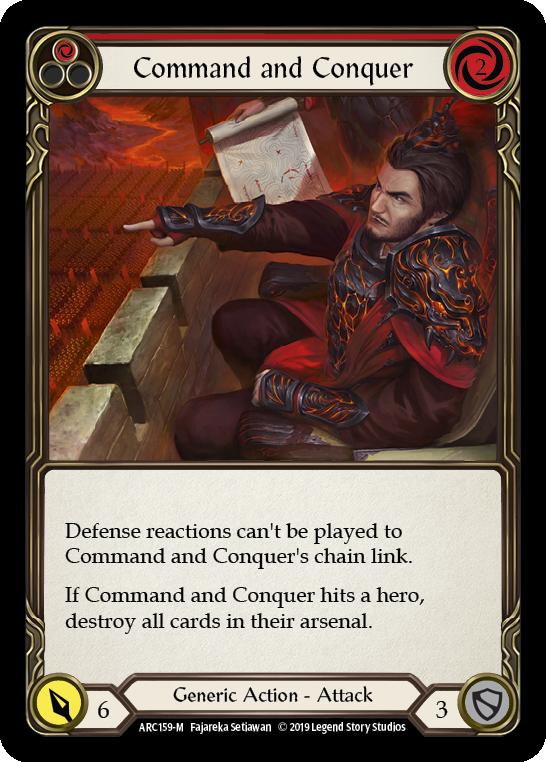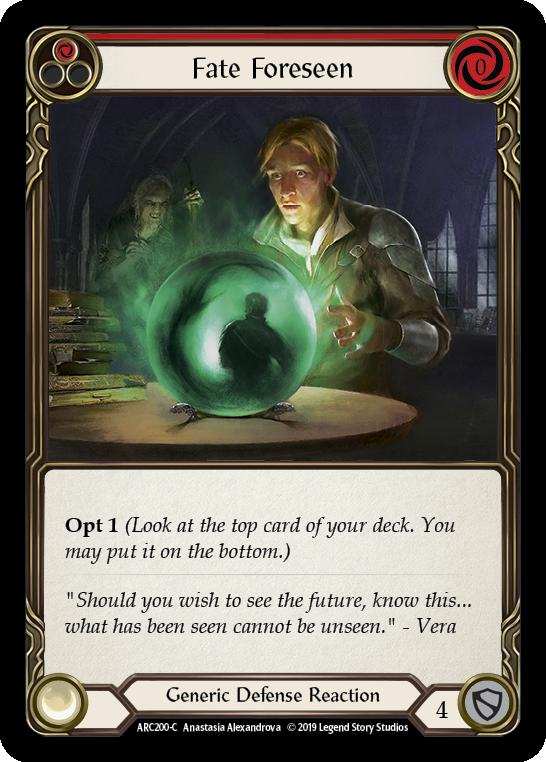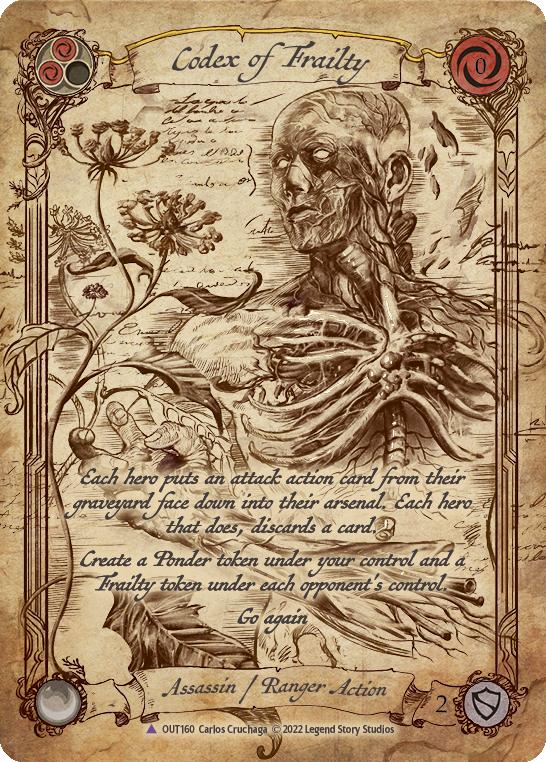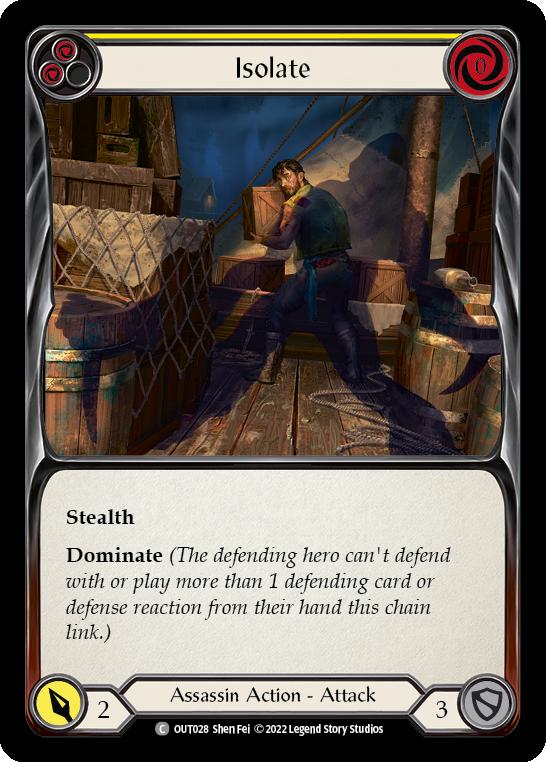Evergreen – Uzuri, Switchblade

(Uzuri, Switchblade | Art by Jessada Sutthi)
Assassin, Flesh and Blood‘s newest addition to the hero class pool, is a great fit for people who love disruptive on hit effects, but prefer them in a more defensive package than its Ranger counterpart.
This is Rhys, back with another edition of Evergreen, a series focused on helping you unlock the power deep within the heroes of Flesh and Blood in the Classic Constructed format. In this edition, you’ll learn to unlock the potential of the Outsiders Assassin, Uzuri, Switchblade.
Uzuri aims to control the pace of the battle from start to finish, threatening the defenses of opposing heroes, as well as hamstringing their return attacks. This is balanced by the stealth mechanic, and how Uzuri’s hero ability only has access to swapping in attacks with a maximum of six damage. This sounds like a significant limitation, especially if your opponent knows they can just block six every time and feel mostly safe, right? Actually, that is technically right, so attack reactions and other tricks play a significant role in your game plan.
Like any skilled Assassin, you’re shrouded in mystery, and rarely make it simple for your opponent.
Tool Time
This starts with weapon selection. Based on what you’re expecting to see from your opponent, you’ll want to pick the dagger that’s most likely to present a relevant impact on your opponent’s cards. For example, Guardians generally prefer to have most of their cards be attack action cards and defense reactions, so they can maximize the attack and defense values of their hand every turn. This means Spider’s Bite and Nerve Scalpel are going to be the weapons of choice. If you face a Runeblade, Orbitoclast is going to be far more relevant than a Nerve Scalpel due to their high non-attack action card count.
If you have trouble remembering every matchup’s key cards at this point, that’s ok. You’re allowed to keep a printed sideboard guide to look at before you begin playing. Jotting down a few key cards you want to bring in alongside the preferred weapons will save you a bit of brainpower for the longer games ahead.
At this point, you’re probably realizing you need cards that have the stealth keyword, have a reliable amount of attacks you want to swap in, and have enough resources to use your daggers when needed. Fortunately, a lot of cards serve multiple roles in this deck. To give you a glimpse of that, have a look at Yuanji Li’s top eight deck from the Realm Rumble $20k invitational.
"Uzuri, Switchblade by Yuanji Li"
Most decks seem to be hovering around ten to twelve blue pitch cards, most of which have stealth, as they can serve the purpose of pressuring an opponent or being used to send a dagger. This is an ideal outcome for hands with multiple stealth cards, and doubly so if you need to block with any.
Surgical Extraction is a high-impact card that’s always worth slotting in. Shred and Isolate are top picks for the deck (as signaled by them both having full play sets), with three block, zero cost, and effects that are the most aligned with what the deck wants to be doing: getting those big on hit effects through. Twelve also happens to be the approximate count for disruptive six-power attacks and stealth cards, mathematically setting you up to have around one of each type of card per hand and keeping you flexible turn over turn. Either you can use your daggers to whittle down the opposing defenses for your stealthy switch into a power attack, or you can easily block with two or three cards and then send a Stealth attack, threatening a switch into disruption.
Picking Your Poison
So now that you have your numbers, what do you choose for disruption? You’ll see Command and Conquer, Death Touch, and Shake Down as the majority of the power attacks, as they have the highest impact on the game and are good against every deck. Other options can include Humble, Erase Face, Amnesia, and even Down and Dirty.
If you’re uncertain of which is best, you can also use Nourishing Emptiness as a universal high-value attack, as it sets you up for big blocks on the next turn. Generally speaking, you would have to have a good reason to play a two-block power attack that isn’t Death Touch. Uzuri, Switchblade is a very capable defensive deck, and you’ll want to be able to consistently threaten a fatigue plan to your opponent, where applicable. Uzuri plays much like Iyslander, Stormbind did, but without the sudden blast of ten arcane damage at the end, so you have to keep the pressure on the whole way down. Isolate as your premium stealth attack often pulls an opponent into a race where they can’t commit more than one card from hand to block with, so they’re incentivized to be aggressive.
Keep an eye out for hands where you can push beyond Uzuri’s normal rate of attack as well. Nimblism can work together with Fyendal’s Spring Tunic to send a two-card attack for nine with Death Touch, or a two-for-seven with Leave No Witnesses. Codex of Frailty can help set these up for few or no resources as well!
Fine Tuning
Now that you can grasp a hand often being one of two patterns of play (block with two cards, swing with two cards; or dagger, swing with two cards), the next step is learning how to pull your opponent into bad outcomes. This is done by keeping a couple of tricks in mind. You can use Shred to shrink a defending block by letting it finish resolving before switching in another attack with Uzuri, Switchblade‘s hero ability. This is especially useful when switching in generic attacks like Command and Conquer.
You can also use those niche instant-speed moments to extract more value from your cards. When your opponent plays a defense reaction, there’s a moment where you have priority while the reaction is played but not yet defending the incoming attack. You can use your priority in the layer step to activate Flick Knives on your Nerve Scalpel to sneak that extra damage in, but also the dagger’s effect will be looking for the next defense reaction to come down. By the time the defense reaction becomes blocking, it will receive the debuff from the Nerve Scalpel. Do keep in mind this can’t apply for any other type of defense.
Don’t be afraid to use a Silver to fix a blue-heavy hand. It won’t come up often, but keep that in mind, especially if you don’t have Blacktek Whisperers equipped!
Since Uzuri has very little go again on attacks, you’ll struggle against Dromai, Ash Artist and her dragon legion. Sigil of Solace is a unique way to absorb three damage from the Aether Ashwings that she summons.
Stay Street Smart
Mistakes are common when playing Uzuri, Switchblade for the first few times, especially if you get in a mindset where you’re just going to do the same thing every turn. Keep in mind that you’re not as good at catching up from behind as most heroes, as many of your turns are damage capped, and your opponent knows exactly what that cap is. This means you have to carefully weigh the disruptive on hit effects to determine when it’s better to take excess damage to try and steal your way back into the game.
Pick your leg equipment carefully. Snapdragon Scalers is an incredible source of pressure in a deck like Uzuri, Switchblade, and is at its best when you’re facing an opponent who wants to block a lot. This can include a Guardian like Bravo, Showstopper, or in the mirror against another Uzuri. Blacktek Whisperers is a blocking armor, and can even be used to give go again multiple times in a game, which is best against aggressive decks or decks with on hit effects that stop you from enacting your game plan, like Azalea, Ace in the Hole.
Codex of Frailty isn’t like what you’ve seen in Lexi, Livewire decks. It’s still a very powerful card, and fun to resolve, but can sometimes get you in trouble if you give your opponent a better attack than you’re able to get back. Since your deck isn’t abusing go again as well as Lexi did, resolving Codex of Frailty without proper awareness can actually cause you to lose.
This final caution for you is one that’s often made when you’re ahead, and can singlehandedly lose you a game: don’t put Shred in your arsenal. You may have had a turn where you crushed their hopes and dreams, and it only took two cards, you didn’t even need to use your Shred. It may feel intuitive to put a reaction in arsenal like you would a Pummel in a Guardian or Brute deck, but if you get pulled into a defensive pattern while it’s in arsenal, you could lock yourself out of the opportunity to set up a way to sneak back into a game, as many of your power attacks aren’t Assassin attacks. There will come a day when you can learn a matchup well enough to know when it’s okay to arsenal a Shred, but that’s not going to come for a while. Crown of Providence can bail you out if you get stuck with it, but it’s good to avoid when possible.
That wraps up this edition of Evergreen! I’ve been having a lot of fun learning Uzuri, Switchblade‘s intricacies, and would recommend her to anyone who enjoyed how Iyslander, Stormbind felt when playing her. I hope you all have a great holiday season if you celebrate, and I’d love to know who you want to learn about next!
Further Reading:
How to Play Uzuri in Classic Constructed


































